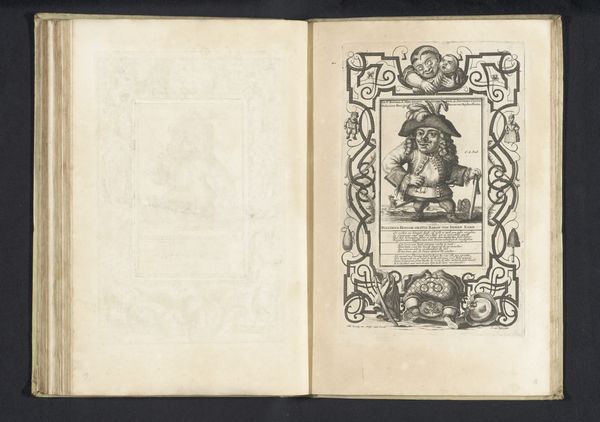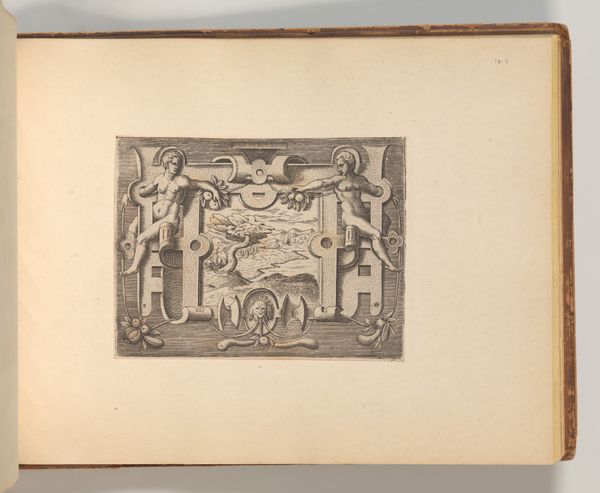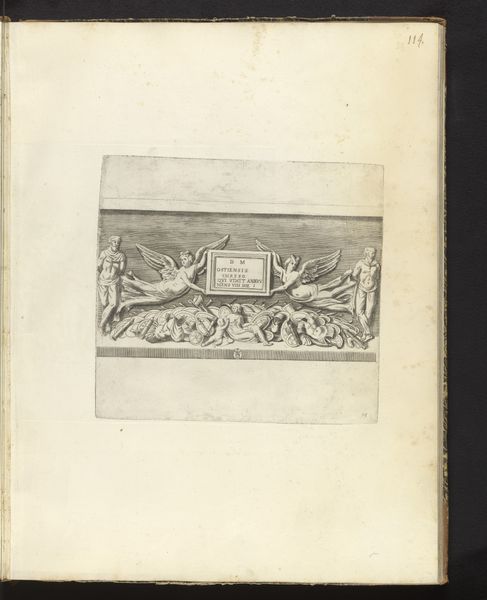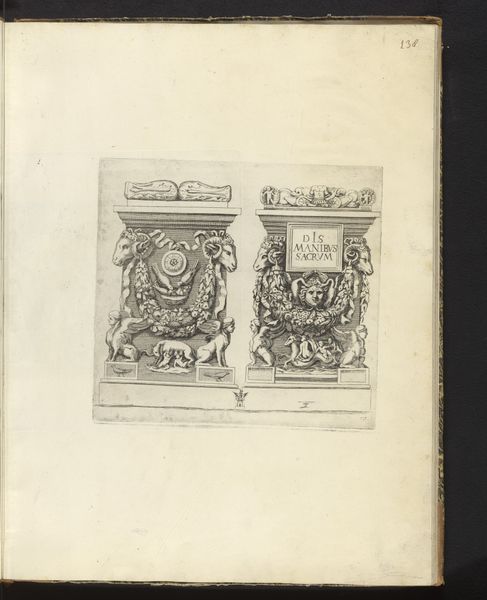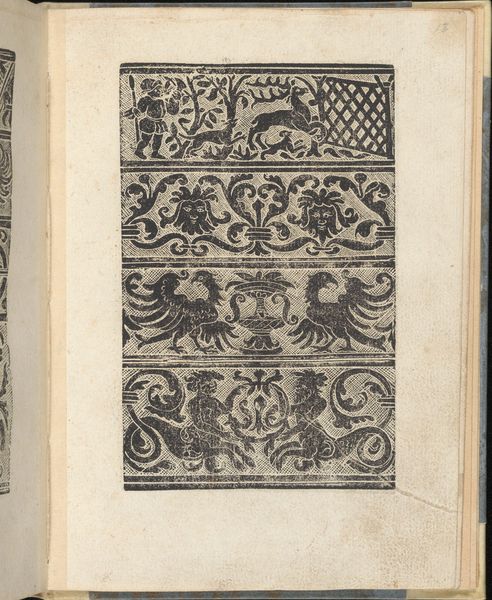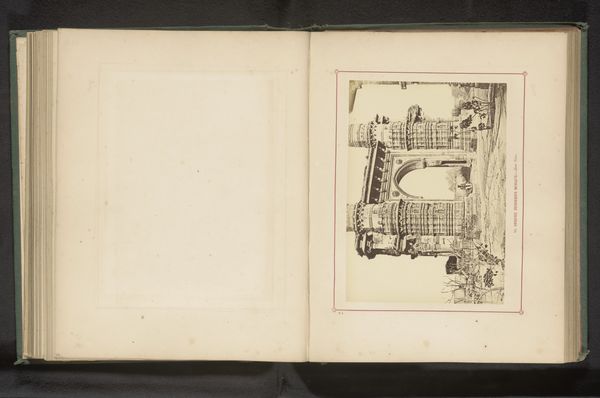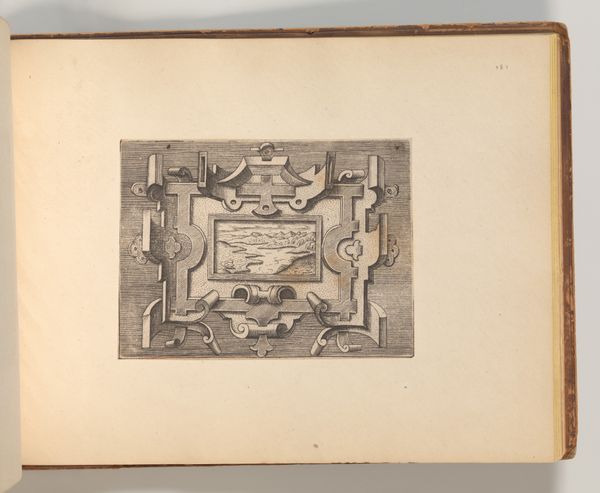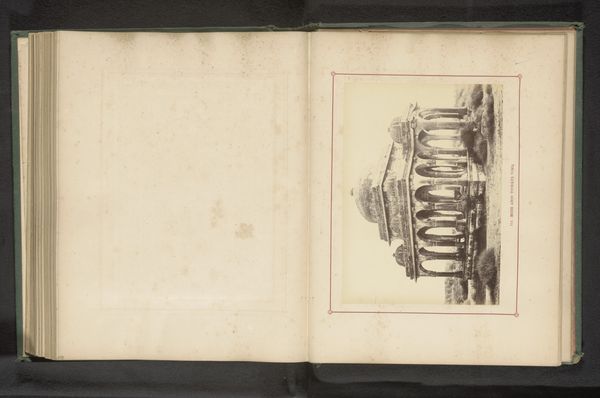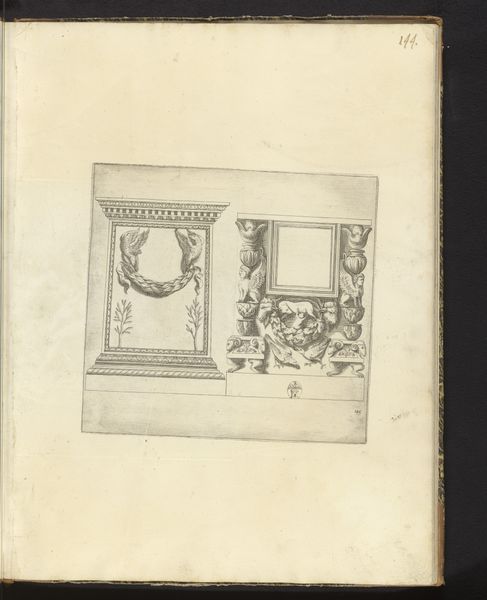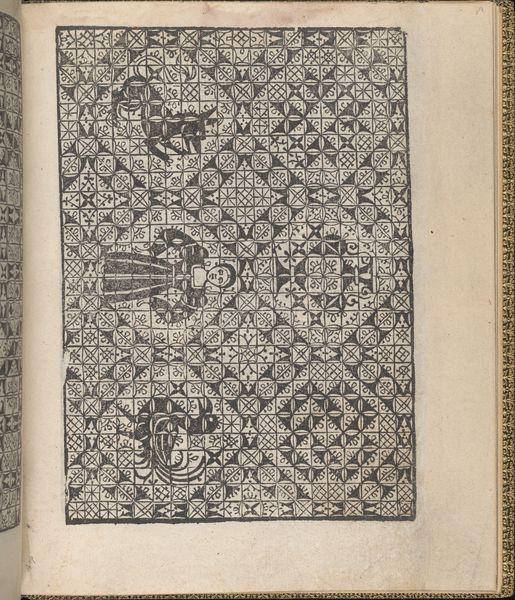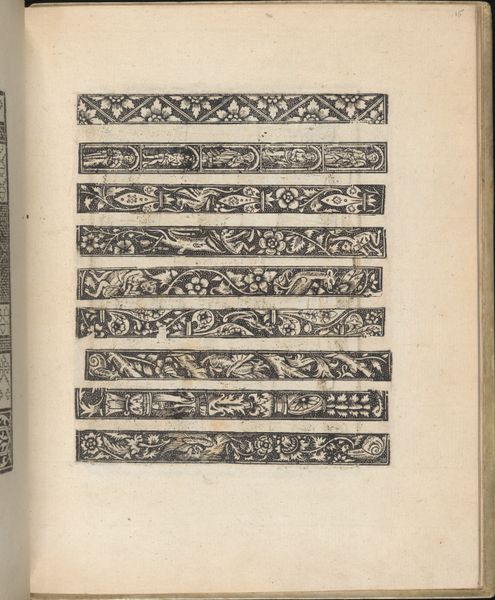
Design for a frame after the Galerie de François 1er at Fontainebleau 1545 - 1547
0:00
0:00
drawing, print, engraving
#
drawing
# print
#
form
#
11_renaissance
#
history-painting
#
decorative-art
#
italian-renaissance
#
engraving
Dimensions: Sheet: 12 3/16 × 8 1/4 in. (31 × 21 cm) Plate: 5 5/8 × 7 7/16 in. (14.3 × 18.9 cm)
Copyright: Public Domain
Curator: Wow, it feels incredibly dense and detailed, even though it's just lines. A kind of organized chaos, maybe? Editor: Today, we are looking at “Design for a frame after the Galerie de François 1er at Fontainebleau,” a work realized in engraving, from around 1545-1547. Its creator, Jacques Androuet Du Cerceau, offers us a window into the decorative arts of the Italian Renaissance. Curator: Frame design, huh? I thought maybe an architectural blueprint. It has this sense of controlled power… like the people who commissioned this piece were trying to frame not just an image, but also their own authority. Editor: The Galerie de François 1er at Fontainebleau was one of the key projects of the French Renaissance. The frame design here becomes a crucial element in understanding how royal power was visualized and disseminated. The decorative choices aren't simply aesthetic; they become powerful signifiers. Curator: It makes you wonder what image would’ve sat inside that blank space. It feels heavy with potential narratives, royal drama, the good stuff! And to imagine all of that hemmed in, purposely—it's almost claustrophobic. Editor: These choices in figuration point to broader shifts in gender and politics. Who is elevated? Who is relegated to the background? The design enforces hierarchies, reinforcing power structures within a historical moment ripe with shifting allegiances and religious upheaval. Curator: Absolutely. It’s not just beautiful scrollwork. Those figures caught in the vines feel almost trapped, subsumed. Maybe this design represents the constraints put on individuals to uphold the whole edifice. I mean, if I saw this, I would consider tearing it down, just a bit… maybe put something different up there. A banana maybe, instead of who they’re celebrating. Editor: I find the Italian Renaissance continuously compelling, precisely because it confronts us with these issues of power and representation. Thank you for bringing your refreshing artistic take into our consideration of the work. Curator: No, thank you for helping me to understand what I was responding to; like something inside of me knew why, but now it’s articulated. So I’m happy!
Comments
No comments
Be the first to comment and join the conversation on the ultimate creative platform.
